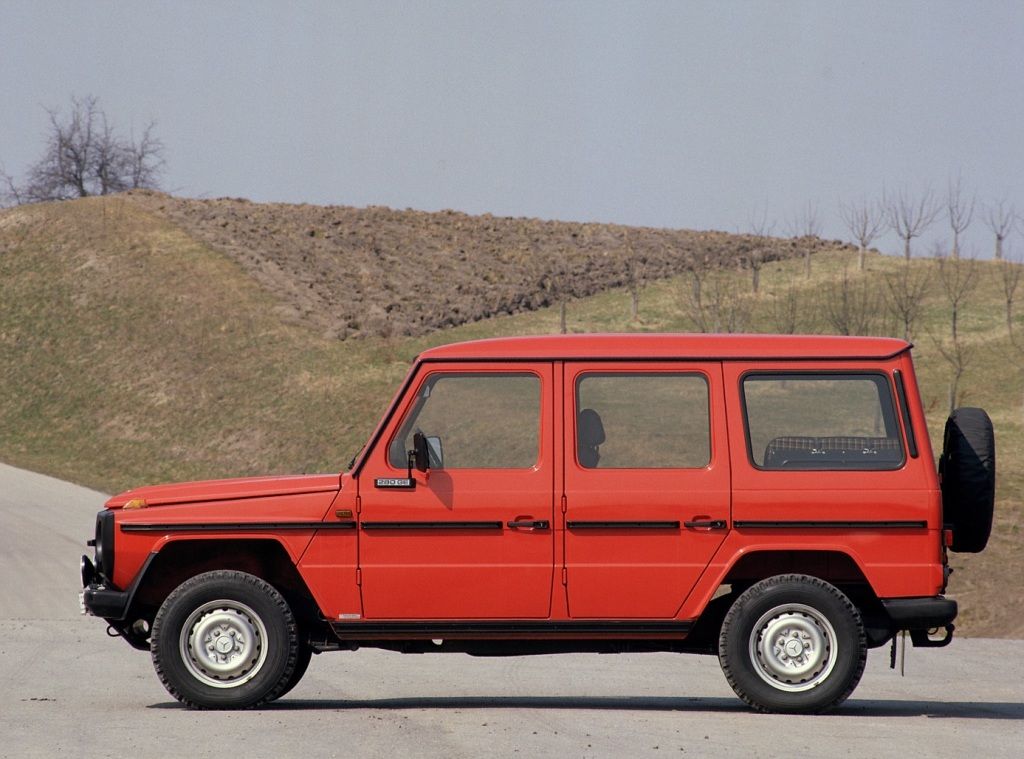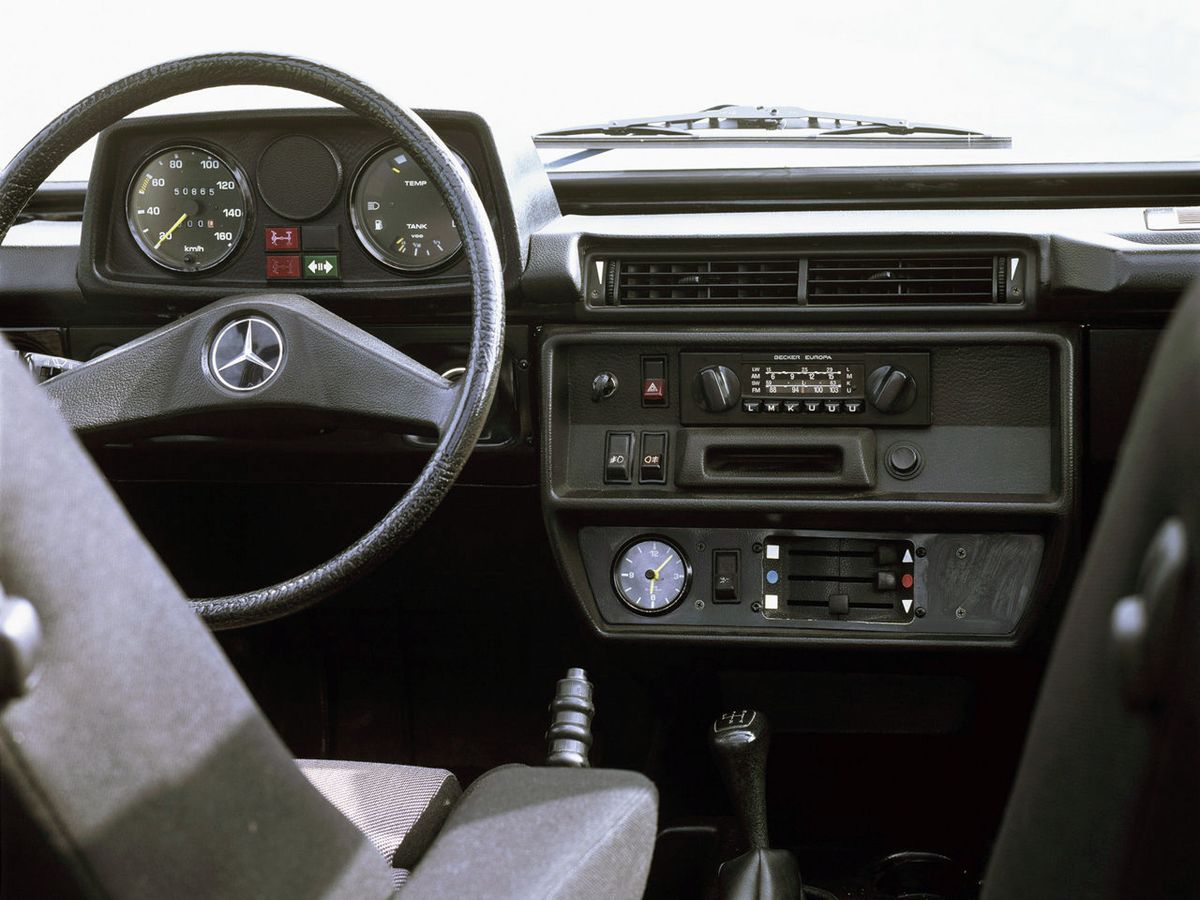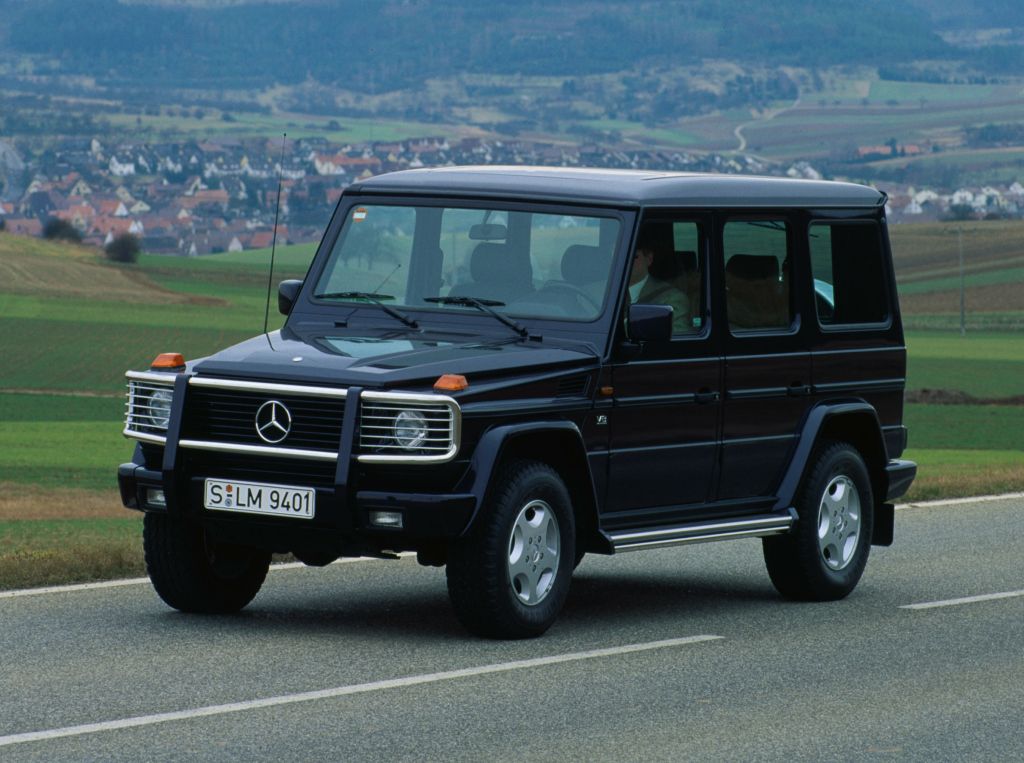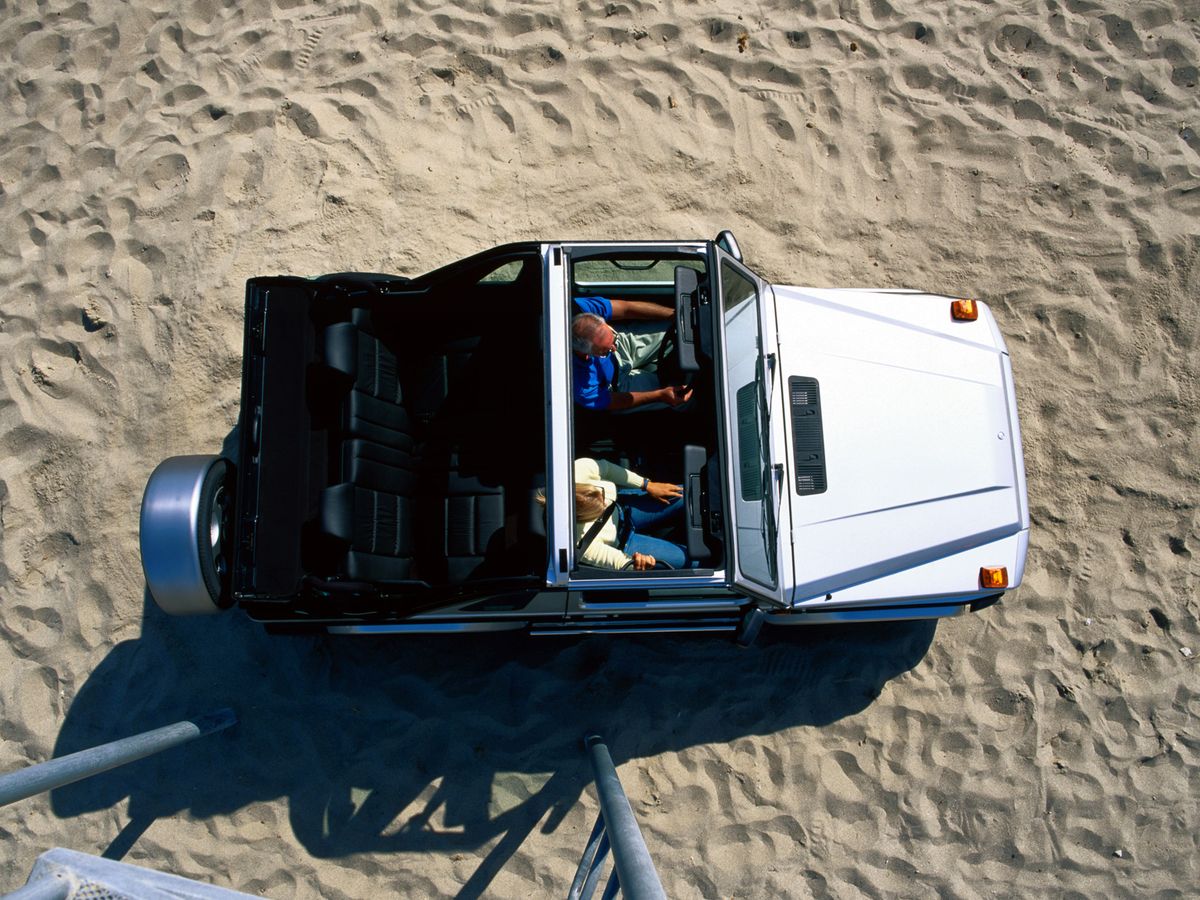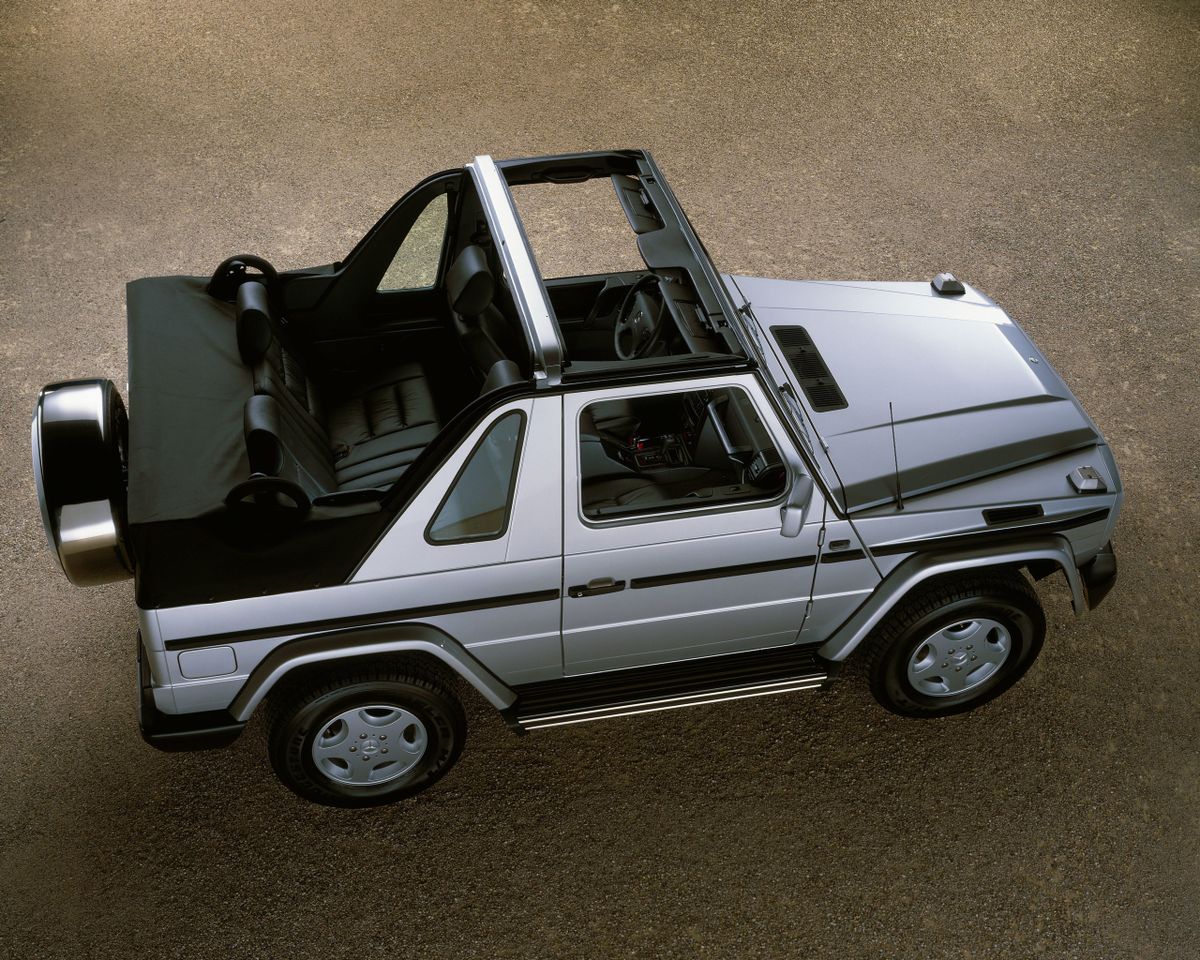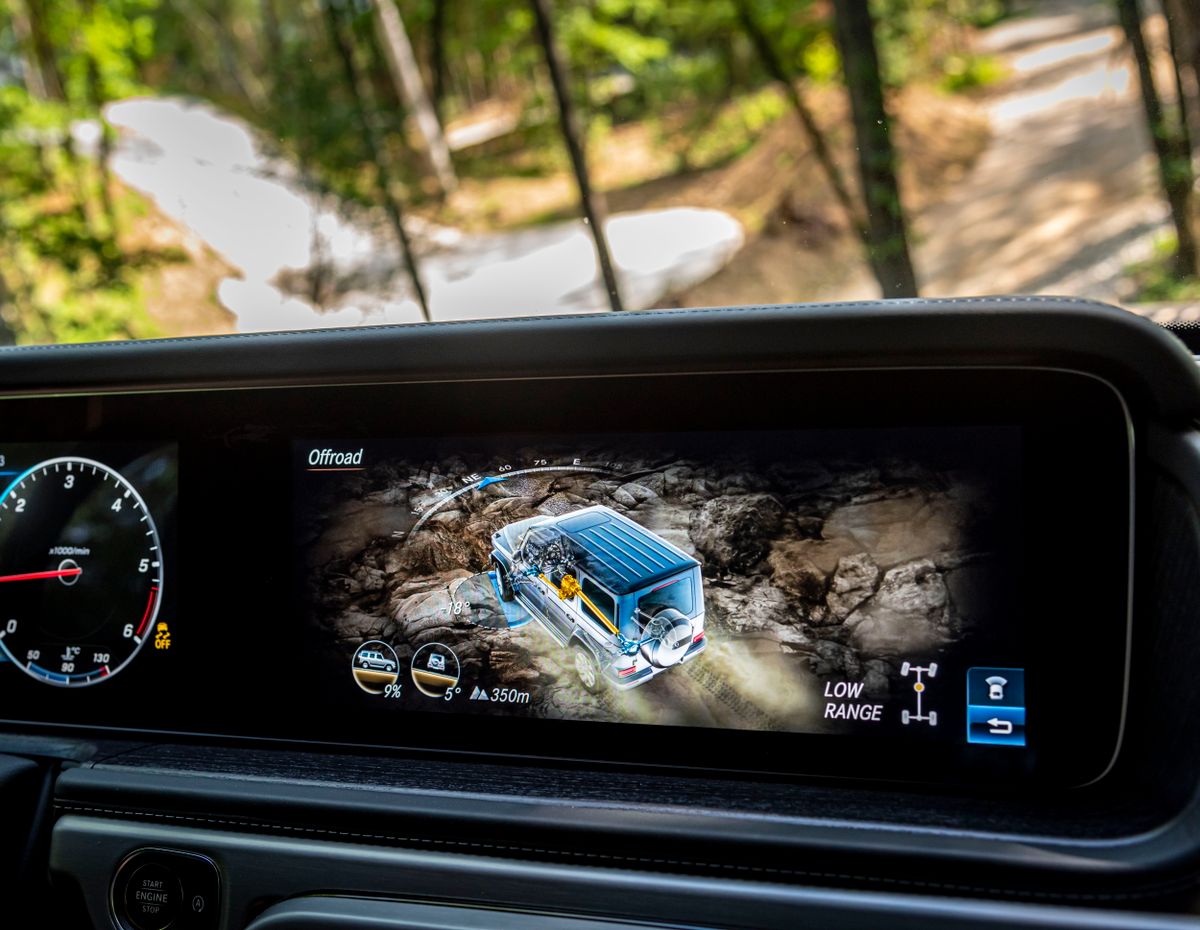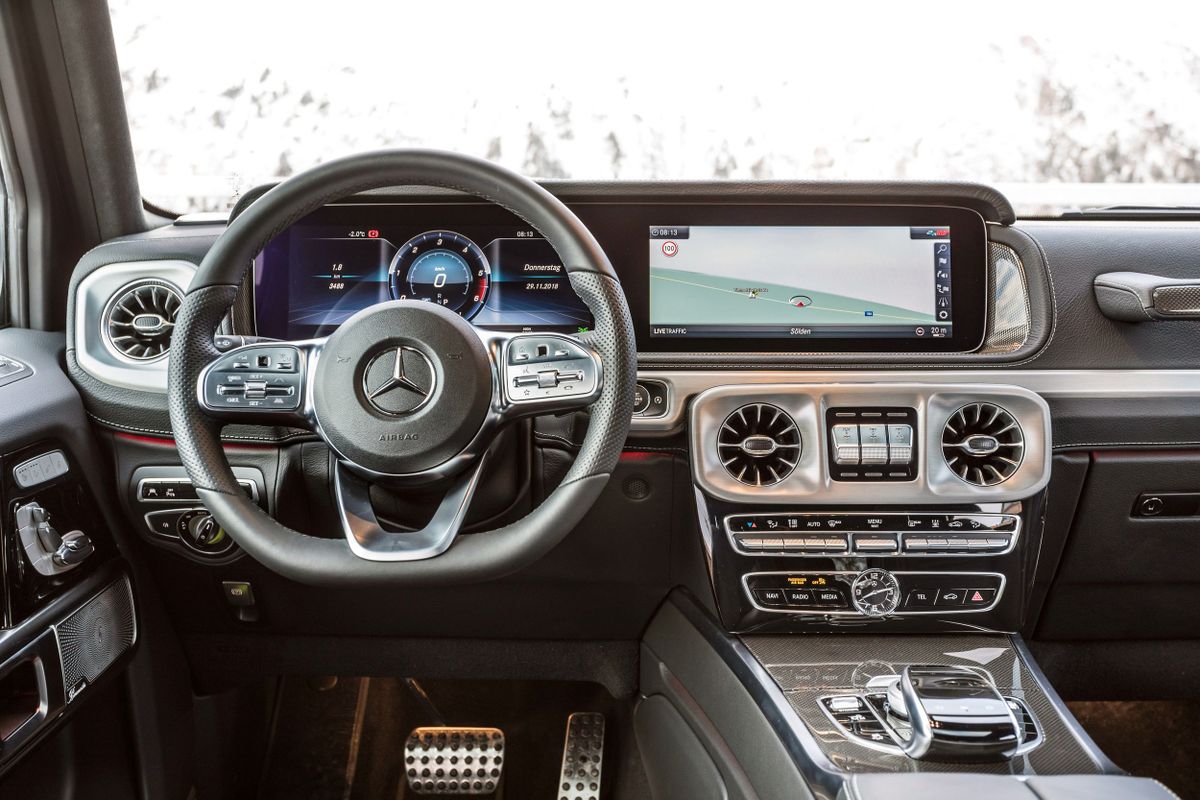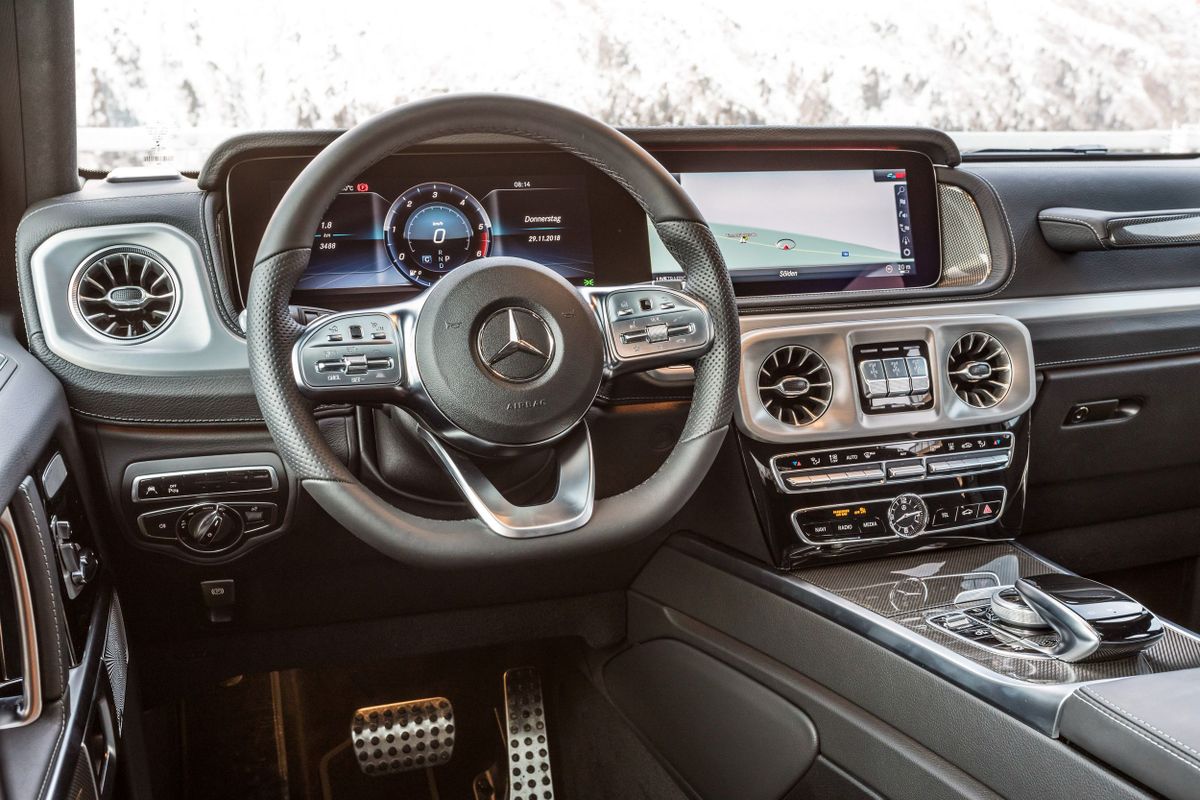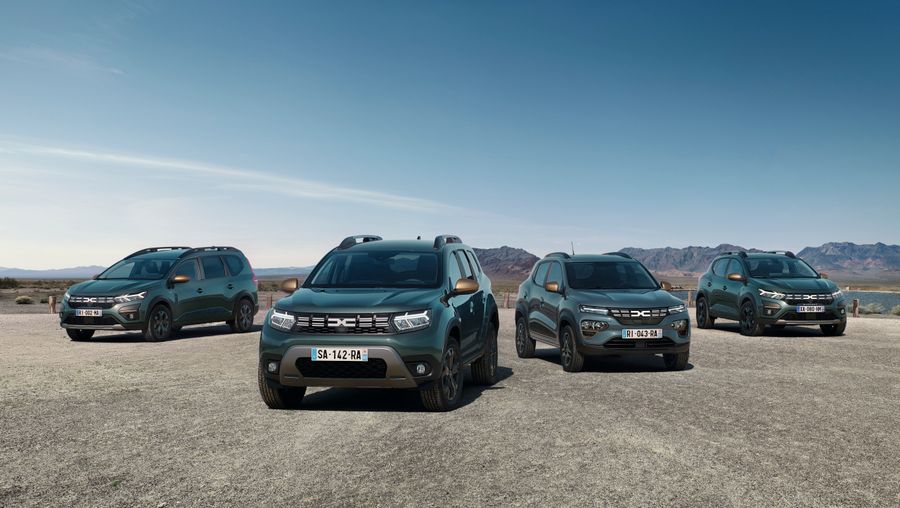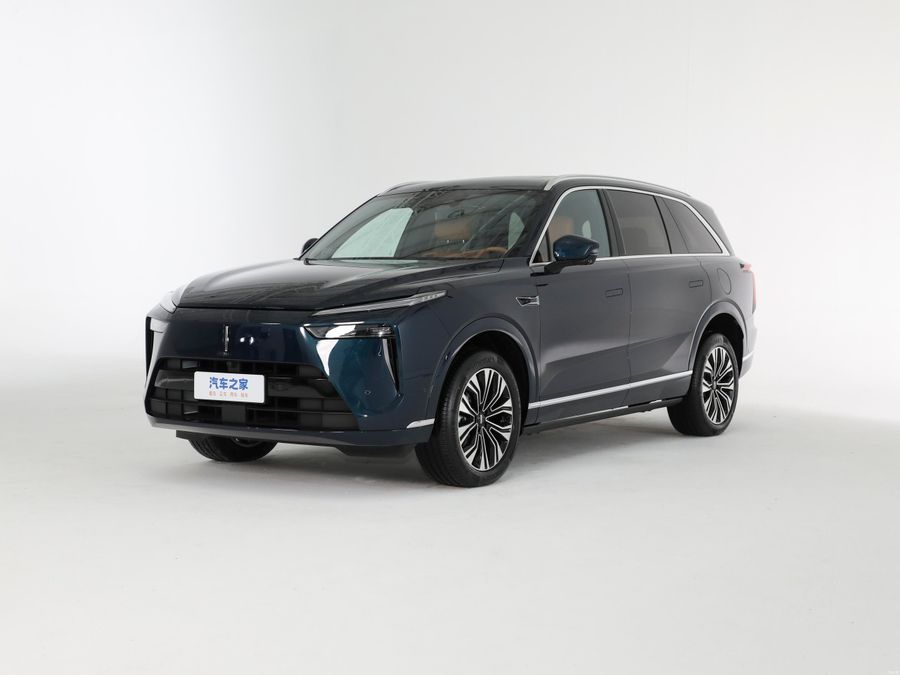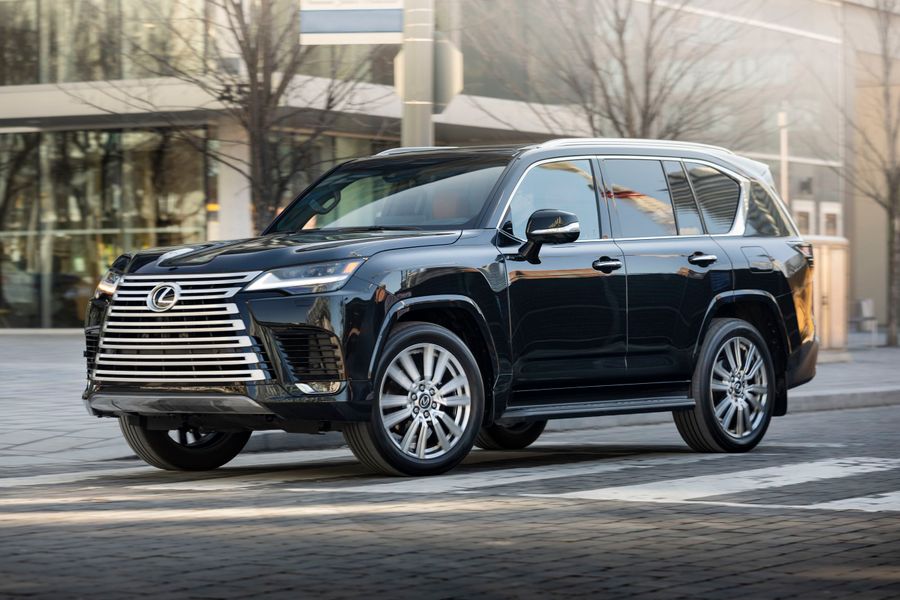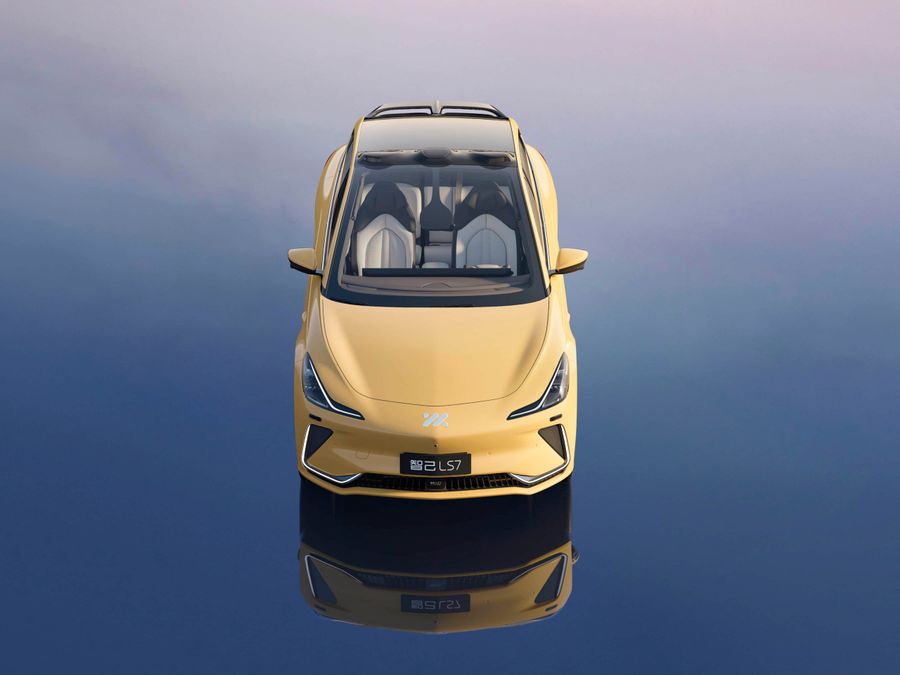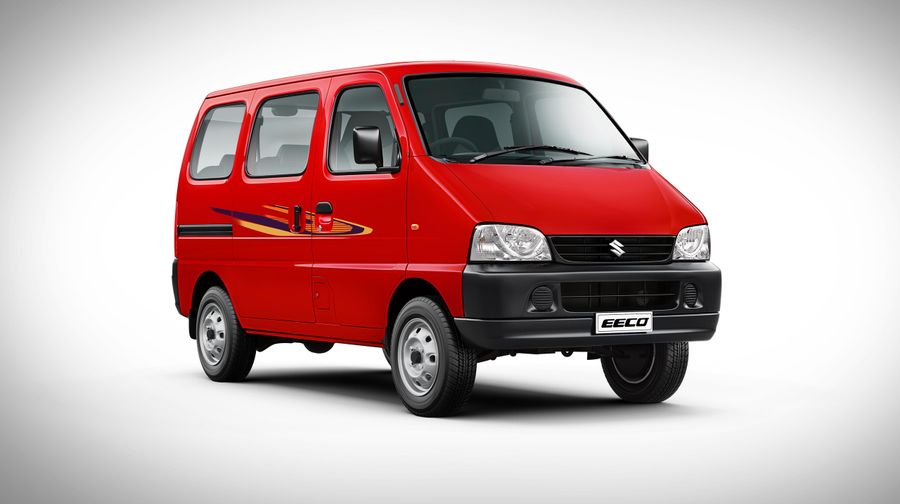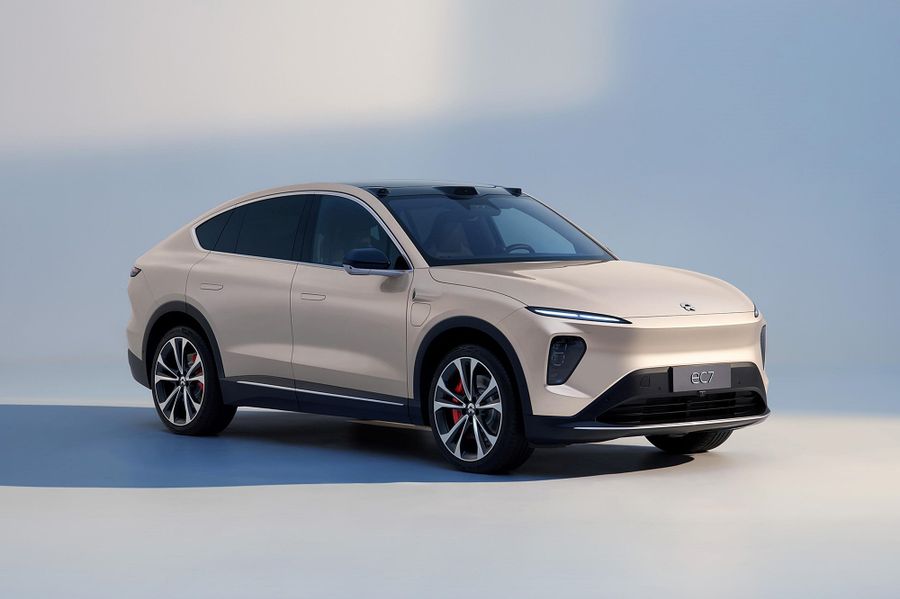
Mercedes G-Class. Living legend in the world of SUVs
The Mercedes G-Class is a series of full-size SUVs produced by Mercedes-Benz (Germany) since 1979. In 2020, Israeli buyers could purchase the third generation of this unique 2018 SUV.
The G-Class is often referred to as the G-Wagen that repeats the sound of the German word ‘Geländewagen’, translated as an ‘off-road vehicle’. The Geländewagens are produced in Austria by Magna Steyr, but sold under the Mercedes-Benz trademark. The Geländewagen is a living legend in the world of SUVs. Both the Pope and the President of Russia have this vehicle. After all, the Mercedes G-Class is the only vehicle in its class armored in accordance with the VR7 standard, which provides protection against all kinds of hits. There are many modifications of the G-Class, both for civil and government use. The civil versions are represented by convertibles, limousines and armored SUVs.
In 1972, Daimler-Benz AG and Magna Steyr (Austria), which had experience in assembling four-wheel drive vehicles, started developing a new off-road vehicle for military purposes. It was only in 1979 that the civil version of the G-Wagen first appeared. And ever since then, the G-Class vehicles have retained their unique exterior regardless of modification, whether it is a factory or high-performance AMG model.
For more than 40 years of its glorious history, the Mercedes Gelandewagen, conceived as a SUV, used to transport soldiers, has turned into a real Rolls-Royce among cross-country vehicles. And its simple functional design, which was once considered to be too humble, is now called classic.
The first generation
It was produced from 1979 to 1991, and was restyled multiple times. The first Mercedes G-Class (W460) was available in short-wheelbase and long-wheelbase variations, equipped with both petrol and diesel engines, and was equipped with a four-speed manual gearbox and front-wheel drive. The buyers could choose a short-wheelbase tarpaulin-covered convertible, or a short-wheelbase or long-wheelbase closed version in accordance with their personal preferences. The military men had a chance to order a long-wheelbase model of both three-door and five-door tarpaulin-covered versions.
The first G-Class had unique off-road performance and felt comfortable both on the road and off-road. Its unfailing performance was due to the great fatigue strength and such simple solutions as a steel frame with a body fixed to it. Moreover, for five years, the designers had subjected the Mercedes G-Class prototypes to extreme tests that took place at the Steyr-Daimler-Puch proving ground, on the Schöckl track near Graz, in the quarry gorge between Kolonią and Aachen, in Scandinavia beyond the Arctic Circle, in the sandy and rocky deserts of North Africa, in the Arabian Peninsula, as well as off-road Argentina.
In August 1991, production of the 460 series was terminated. That was also when the company presented its W461 series, a special military model, which was produced until 2001. This vehicle was designed for special operating conditions and was purchased mainly by the military men, special services and other government agencies. To this day, it is used by the armies of more than 20 countries around the world. And only in 2014, the W461 series was officially excluded from the Mercedes-Benz catalogs. During its long life, the special military G-Class SUV proved both its reliability and its endurance, almost without any competitors in tenders for the supply of vehicles for the armed forces. The most famous armored G-Class Mercedes was the ‘Papamobile’, manufactured in 1980 for Pope John Paul II, which had a rear part equipped with the bullet-resistant glass dome. In Russia, this model is included in the President’s vehicle fleet.
The Geländewagen is a living legend in the world of SUVs. Both the Pope and the President of Russia have this vehicle.
During the first 10 years of its life, the Geländewagen was restyled many times. The military men complained that the engine power was too low, while the private clients were not satisfied with its humble interior, lack of automatic transmission and air conditioning, as well as a small range of bodywork colors. And the company took into account all of these complaints. Making minor changes to the exterior and equipment of the vehicle has become a characteristic feature that accompanies the G-Class to this day.
The second generation
It was produced from 1990 to 2018, and was restyled many times, becoming even more luxurious and comfortable each time. The owners of these vehicles needed more comfortable seats, air conditioning, a more advanced dashboard and stereo system. The rapidly growing segment of civilian buyers was waiting for significant changes in terms of comfort provided by other passenger cars. Therefore, Mercedes decided to create a new G-Class model aimed exclusively at civilians.
The second G-Class (W463), created by the Passenger Car Division of Stuttgart, made a splash. It featured a new plastic radiator grille, side mirrors, a new front bumper with integrated fog lights, a rear bumper, enlarged taillights, a left-side exhaust pipe and a right-sided fuel tank. The interior underwent some significant changes. It was a completely different vehicle! It boasted of a redesigned dashboard and center console, air conditioning, leather upholstery, elegant seats, audio system and an electric roof. The range of additional options was significantly expanded. The second generation Geländewagen was equipped with an airbag and ABS, which used to be provided only for passenger cars.
Just like the W460 in the eighties, the W463 series required constant modernization in the nineties. Every year, the manufacturers replaced certain components with more advanced ones and added various additional options. The premieres of the new models were characterized by the demonstration of ever more advanced technology and more powerful engines.
In 1998, the manufacturers presented the G 55 AMG, the fastest, most reliable and best-equipped G-Class vehicle in history. It was powered by a 354 hp V8 engine that was previously used in other AMG models, allowing the car to accelerate to 100 km/h in 7.4 seconds with a maximum speed of up to 209 km/h. It’s hard to imagine, but the G 55 AMG kept all the solutions, including all-wheel drive, that characterized the W463 series. In 2004, the manufacturers presented the G 55 AMG, equipped with a 476 horsepower compressor engine. The vehicle could accelerate from 0 to 100 km/h in 5.6 seconds. And in 2012, a new high-performance version of the G 63 AMG with more than 500 hp was released. Its acceleration to 100 km occurred in 5.4 seconds. Moreover, the top-end version of the G 65 AMG with a 6-liter twin-turbo V12 engine, producing over 600 hp, was released. In 2013, a 6×6 vehicle was added to the model range of the G-Class SUVs.
The third generation
It has been produced from 2018 to the present (as of 2020). The upgraded legend, or rather, a completely new generation of the Mercedes G-Class SUV, was officially presented on January 14, 2018 at the Detroit Auto Show. At first glance it may seem that the designers have only slightly changed the body of the SUV by making it look more modern. But this is a completely new W464 body. It has been transformed from a brutal and combative SUV into a luxurious and elegant car, featuring numerous elements of the S-Class sedan.
The G-Class is often referred to as the G-Wagen that repeats the sound of the German word ‘Geländewagen’, translated as an ‘off-road vehicle’.
The exterior of the 2018/2019 Mercedes G-Class has practically not changed. It is the same ‘cube’ with well-recognizable features. But the designers managed to combine modern technology and the original SUV style. The new Geländewagen has tight door knobs, so just like in the previous model, it is required to apply force to close the door, and is also equipped with a full-fledged spare wheel. However, all other body parts are modern. The width of the body has increased by almost seven centimeters, and by all twelve in the Mercedes AMG G 63. The glasses and bodywork are actually not flat, but slightly rounded for the sake of rigidity. The radiator grille features a huge corporate emblem in the form of a three-pointed star and chrome-plated horizontal inserts. Above the emblem is the front view camera, slightly leaning forward. This tilt facilitates the parking process and provides a perfect view when descending. The front optics of the 2019/2020 Mercedes G-class in all trim levels are adaptive, based on LEDs, and the round headlights around the perimeter are decorated with LED running lights. And this is not a complete list of changes! The windows are now glued in, and not fitted as before, the roof is laser-welded, etc.
Unlike the exterior, the interior is absolutely new, featuring only a few function buttons from the 2nd generation. Despite the preserved rough style, the interior of the 2020 Mercedes G-Class has become much more luxurious in terms of comfort and functionality. Now the multimedia system and the dashboard are placed under one protective glass, and the front panel itself depends on the selected trim level. In the basic version, there is a pointer speedometer and a tachometer, with a color display between them. The steering wheel of the new SUV is in many ways reminiscent of a 3-spoke steering wheel in the S-Class, with two spokes being reserved for functional purposes, including touch-sensitive buttons.
The digital dashboard is based on a 12.3-inch display and is able to display 3D navigation maps and change the location of the instruments. The same size touchscreen is dedicated to a multimedia system compatible with Apple CarPlay and Android Auto. The center console looks more modern, comprising two round air ducts on top and three classic four-wheel drive lock control buttons between the air ducts.
The new Mercedes G-Class SUV has retained its unique off-road performance. The G-Class does not have Hill Descent Control or any off-road assistants. They are fully replaced by three locks and a reducer with the reduction gear ratio increased to 2.9. These components can only be activated manually, while ABS and ESP are deactivated, and traction control and power steering are switched to off-road programs. The geometric off-road performance is simply gorgeous: 240 mm - under the lower point of the rear axle, and as much as 270 mm - under the protection of the power train!




